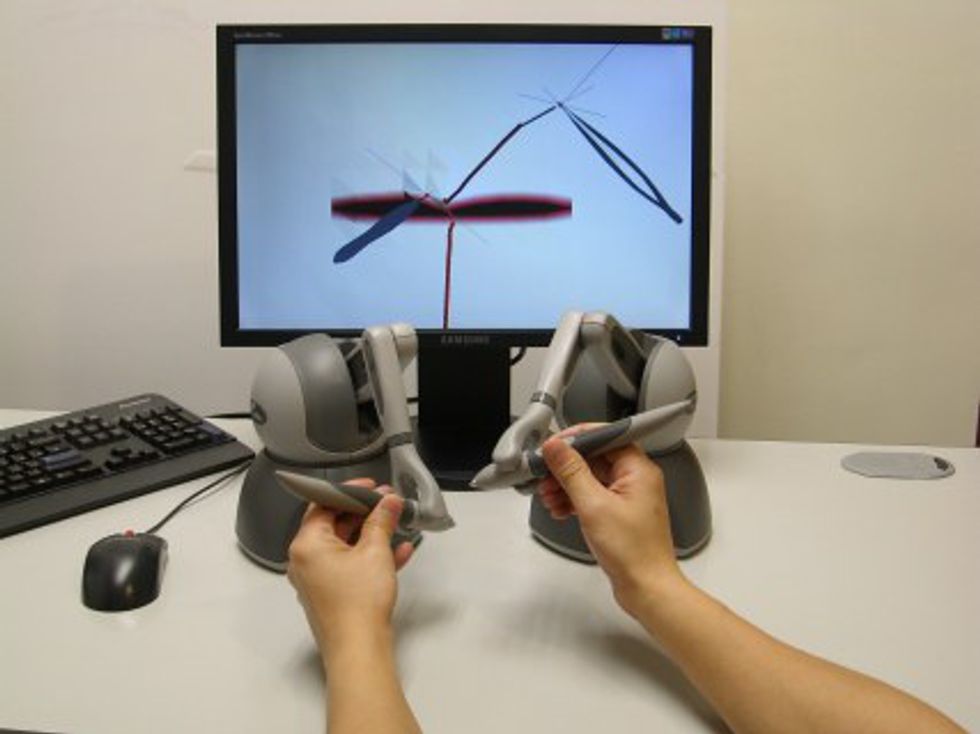What could be a more influential learning experience than experiencing problem-solving, stressful circumstances that could mean life or death for an individual? With the help of virtual reality technology, doctors and health research organizations are able to combat with the ongoing health concerns of the overall population. Whether it is surgery, PTSD, or other health conditions, doctors have developed a safe way to not only increase the interaction between patient and doctor, but between medical students and their studies of clinical and medical practices.
The Oculus Rift which was bought by Facebook in 2014 for 2 million dollars is now being explored as one of the leading virtual reality technologies being used in medical training. Beyond the aspects of 3-D gaming, the Oculus Rift, and other similar technological advancements, are allowing for a in-depth experience. From transferring an office space into a medical room and a therapy office into fictional world, virtual reality is changing the way we perceive the world around us.
One of the clear benefits of this up-and-coming technology is its creative addition to the science and health industries. With doctors constantly being busy after their medical training, it is virtually impossible to be able to connect and adapt to changes in procedures and technology used for different surgeries. With these online, virtual tools, professionals are able to create scenarios where different medical practice are in place, even allowing trainees to practice suturing and other precise procedures. The ability to provide this one-on-one training allows future medical professionals to receive hands-on experience with potential dangerous health-risk situations and allows them to problem solve key issues without putting patients at risk.
Sure this technology exists, but what are the potential uses in the medical field. To some people VR (virtual reality) may seem of a more entertainment oriented creation, but, with the uprise in technology, VR may become the future of medical training.
Here are some of the possibly being explored by medical professional today:
1. Live Streaming Surgeries
What better way to learn how to do something than to watch a demonstration live. At Royal London Hospital, cancer surgeon Dr. Shafi Ahmed, broadcasted an operation done on a 70-year colon cancer patient. Using the software developed at his virtual reality startup, Medical Realities, Dr. Shafi performed in front of a group of more than 50,000 individual from around the globe. Viewers watched the process on a wide range of technological platforms, including their smartphones and computer screens, and could even use virtual reality headsets such as the Samsung Gear, Oculus Rift or Google Cardboard.
2. Surgery Planning
It is better to predict possible outcomes of a situation. By having and using technology that simulates real world issues, doctors are able to problem solve possible answers to live threatening complications that could occur during a difficult surgery.
3. Pain Relief
Sometimes the only way to forget about the pain and stress we may be feeling is to take ourselves out of the situation. With virtual reality, doctors are able to remove their patients from a state of anxiety, pain, or distress, and allow them to freedom to find entertainment that brings them out of their stressful mindset. Virtual reality worlds and games allow the viewer to be feel relieved of their stress, not simply distracting them.
4. Treating Medical Conditions
The University of Oxford has researched virtual reality simulation that has been used to help cure and work with patients who suffer from medical conditions such as paranoia. Patients who struggled in situations with crowded elevators and trains were gradually introduced to the object of their fear, ramping up the exposure until they were able to cope without stress. Even a 30-minute session showed major tremendous progress.
So maybe virtual reality isn't just about all the gaming hype. With so many potential applications to our current technological possibilities, the expansion and development of this new technology could be revolutionary.




















